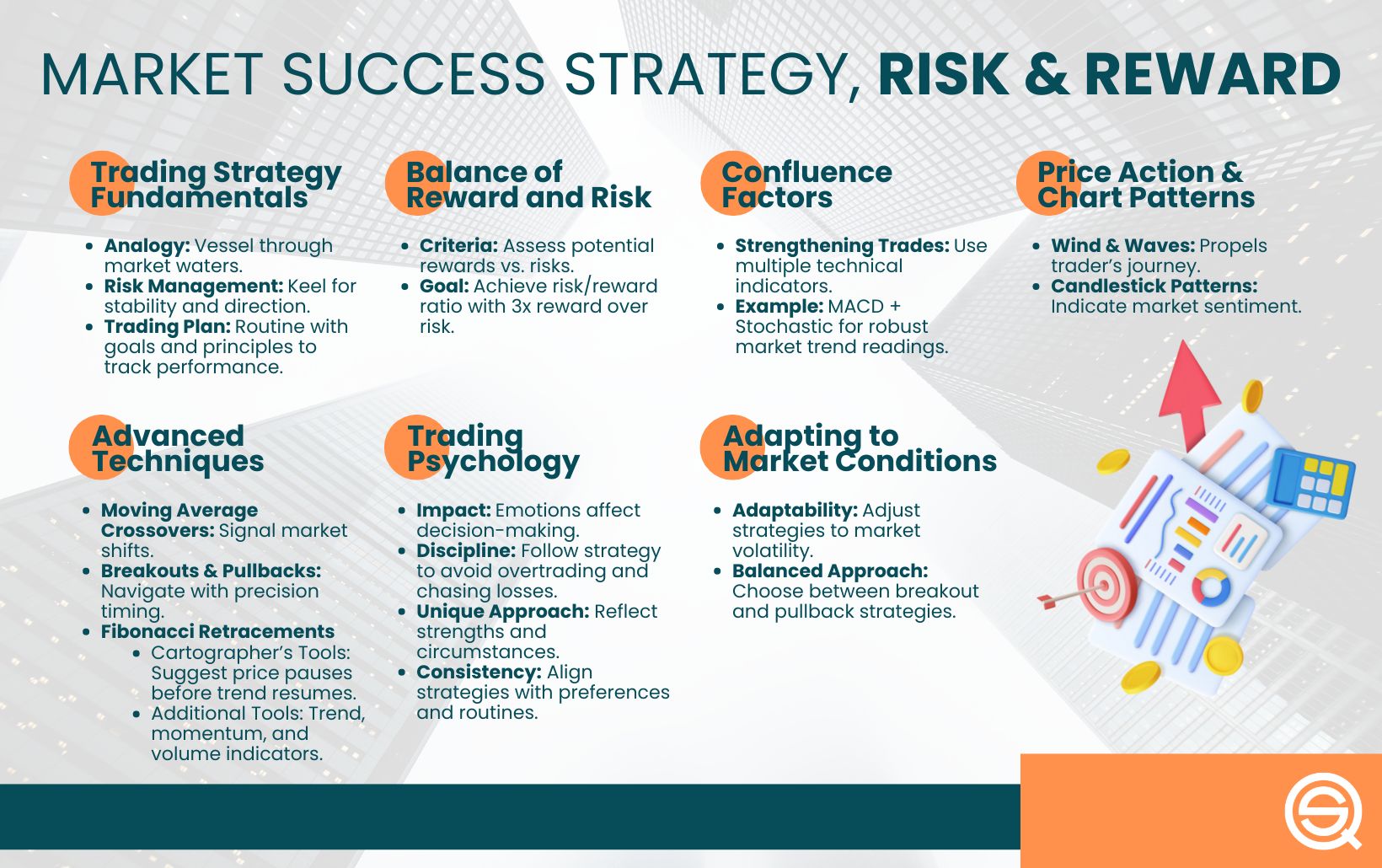Did you know that even the most seasoned traders can get more nervous than a cat in a room full of rocking chairs during a breakout? In the world of breakout trading, psychological challenges can significantly impact decision-making and performance. This article dives into the intricate psychological aspects that traders face, from the fear of missing out to the crippling effects of overconfidence. We’ll explore the importance of discipline, emotional control, and patience, along with strategies to manage anxiety and cognitive biases. Additionally, we’ll discuss mindset shifts necessary for effective trading and techniques like visualization that can enhance performance. Discover how traders can build resilience and improve their psychological skills with insights from DayTradingBusiness, ensuring you’re well-equipped to navigate the thrilling yet turbulent landscape of breakout trading.
What are the psychological challenges of breakout trading?
Breakout trading presents several psychological challenges:
1. Fear of Missing Out (FOMO): Traders often feel pressure to enter a position quickly, worrying they’ll miss potential profits if they wait too long.
2. Overconfidence: After a successful breakout, traders might become overly confident, leading to reckless decisions and ignoring risk management.
3. Loss Aversion: The fear of losing money can cause hesitation in entering trades or exiting too late after a breakout fails.
4. Emotional Reactions: Sudden price movements can trigger emotional responses, leading to impulsive trading decisions instead of following a strategy.
5. Chasing Losses: After a failed breakout, traders might enter subsequent trades with a desperate mindset to recover losses, often resulting in further losses.
6. Analysis Paralysis: Traders may overanalyze data and signals, causing missed opportunities due to indecision.
Addressing these challenges requires discipline, a solid trading plan, and emotional regulation strategies.
How does fear impact breakout trading decisions?
Fear can significantly hinder breakout trading decisions by causing hesitation and overanalysis. Traders may second-guess their instincts, missing entry points due to anxiety about potential losses. This fear can lead to premature exits, as traders may close positions too early to avoid risk, undermining profit potential. Additionally, fear of missing out (FOMO) can push traders into impulsive decisions, entering trades without proper analysis. Overall, managing fear is crucial for effective breakout trading.
Why is discipline crucial for successful breakout trading?
Discipline is crucial for successful breakout trading because it helps traders stick to their strategies, manage risks, and control emotions. It ensures consistent execution of entry and exit points, avoiding impulsive decisions during volatile market movements. With discipline, traders can adhere to their trading plan, maintain focus on long-term goals, and avoid the pitfalls of greed and fear, ultimately leading to more reliable and profitable trades.
What role does emotional control play in breakout trading?
Emotional control is crucial in breakout trading because it helps traders stick to their strategies and avoid impulsive decisions. When a breakout occurs, fear of missing out (FOMO) can lead to hasty entries or exits. Maintaining emotional control allows traders to wait for confirmation signals before acting. Additionally, it helps manage the stress of potential losses, enabling more rational responses to market fluctuations. Overall, strong emotional control fosters discipline, which is essential for consistent success in breakout trading.
How can traders manage anxiety during breakouts?

Traders can manage anxiety during breakouts by employing several strategies. First, establish a clear trading plan with defined entry and exit points to reduce uncertainty. Use stop-loss orders to limit potential losses, providing a safety net that eases stress. Develop a routine that includes regular breaks to maintain mental clarity. Practice mindfulness or deep-breathing exercises to stay focused and calm. Finally, keep a trading journal to reflect on past trades, helping to build confidence and reduce fear of making mistakes during volatile moments.
What are common cognitive biases in breakout trading?
Common cognitive biases in breakout trading include:
1. Confirmation Bias: Traders favor information that supports their existing beliefs about a breakout, ignoring contrary data.
2. Overconfidence Bias: Traders overestimate their ability to predict breakout success, leading to larger, riskier positions.
3. Loss Aversion: Fear of losing prompts traders to hold onto losing breakout trades longer than necessary.
4. Anchoring: Traders fixate on a specific price level, influencing their decisions and potentially missing better entry points.
5. Herd Behavior: Following the crowd can lead to impulsive breakout trades based on popularity rather than analysis.
6. Recency Bias: Recent successful breakouts may lead traders to expect future successes, skewing their judgment.
Awareness of these biases can improve decision-making in breakout trading.
How does overconfidence affect breakout trading strategies?
Overconfidence can lead traders to underestimate risks and overestimate their ability to predict price movements in breakout trading. This may result in entering trades too early or holding onto losing positions longer than necessary. Traders might ignore critical market signals, leading to poor decision-making and increased losses. Additionally, overconfidence can cause excessive trading, resulting in higher transaction costs and emotional fatigue. Balancing confidence with a realistic assessment of market conditions is crucial for successful breakout trading.
What psychological techniques can improve breakout trading performance?
To improve breakout trading performance, focus on these psychological techniques:
1. Mindfulness: Stay present and aware of your emotions. This helps avoid impulsive decisions during high volatility.
2. Journaling: Track your trades and emotional responses. Analyzing past trades can highlight patterns and improve future decisions.
3. Visualization: Picture successful trades before executing them. This builds confidence and reinforces positive outcomes.
4. Risk Management: Establish clear stop-loss levels. Knowing your limits reduces anxiety and helps maintain discipline.
5. Positive Self-Talk: Replace negative thoughts with affirmations. This boosts confidence and maintains focus during challenging trades.
6. Routine Development: Create a consistent trading routine. Familiarity reduces stress and helps you stick to your strategy.
7. Emotional Detachment: Treat trades as numbers, not personal victories or defeats. This helps maintain objectivity.
8. Patience: Wait for clear confirmation of breakouts before entering trades. Rushing can lead to mistakes.
Incorporating these techniques can enhance your mindset and improve breakout trading results.
How can traders build resilience in breakout trading?
Traders can build resilience in breakout trading by developing a strong mindset and effective strategies. First, embrace losses as part of the learning process; this aids in emotional recovery. Second, set clear risk management rules to protect capital and minimize stress. Third, maintain a disciplined trading routine, focusing on predetermined entry and exit points. Fourth, practice mindfulness techniques to manage anxiety during volatile market movements. Lastly, review trades regularly to identify patterns and improve decision-making. This combination of mindset and strategy enhances resilience and boosts long-term success in breakout trading.
Why is patience important for breakout traders?
Patience is crucial for breakout traders because it allows them to wait for the right moment when a price movement confirms a breakout. Rushing into trades can lead to missed opportunities or entering false breakouts, resulting in losses. By being patient, traders can analyze market conditions, confirm patterns, and execute trades with confidence. This discipline helps manage emotions, reduces impulsive decisions, and enhances overall trading success.
How do market conditions influence trader psychology in breakouts?

Market conditions significantly impact trader psychology during breakouts. In bullish markets, traders often feel optimistic, leading to increased buying pressure as they anticipate sustained momentum. Conversely, bearish conditions can create fear and hesitation, causing traders to second-guess their decisions, which may lead to missed opportunities.
High volatility can heighten emotions, pushing traders to react impulsively, either chasing breakouts or exiting positions prematurely. Conversely, in stable markets, traders may exhibit patience, waiting for confirmation before acting. Overall, understanding these psychological influences helps traders navigate breakouts more effectively.
What mindset shifts are necessary for effective breakout trading?
To succeed in breakout trading, adopt these mindset shifts:
1. Embrace Uncertainty: Accept that not every breakout will lead to profits. Focus on managing risk.
2. Be Patient: Wait for clear signals instead of jumping in too early. Timing is crucial.
3. Stay Disciplined: Stick to your trading plan and avoid emotional decision-making.
4. Learn from Losses: View setbacks as learning opportunities to refine your strategies.
5. Trust Your Analysis: Rely on technical indicators and market trends rather than market noise.
These shifts will enhance your effectiveness as a breakout trader.
How Do Psychological Factors Influence Day Trading Breakout Strategies?
Day trading breakout strategies involve entering trades when the price breaks above a resistance level or below a support level, aiming to capitalize on significant price movements. Key psychological aspects include managing emotions, maintaining discipline, and avoiding overtrading. Traders must stay focused, control fear and greed, and stick to their trading plan to effectively execute breakout strategies.
Learn more about: What Are Day Trading Breakout Strategies?
Learn about How Do Institutional Traders Influence Day Trading Strategies?
How can visualization help with breakout trading psychology?
Visualization enhances breakout trading psychology by mentally preparing traders for potential market scenarios. It helps them anticipate price movements and develop a clear strategy, reducing anxiety during trades. By visualizing successful trades, traders build confidence and reinforce positive behaviors. This mental practice can also help in managing emotions like fear and greed, leading to more disciplined decision-making. Ultimately, visualization creates a stronger psychological foundation, allowing traders to react effectively to market changes.
What are the effects of trading losses on breakout traders' mindset?
Trading losses can significantly affect a breakout trader's mindset. They may experience heightened anxiety, leading to second-guessing their strategies. Losses can create a fear of missing out (FOMO), pushing traders to enter positions impulsively. This might result in overtrading, where they chase losses rather than sticking to their plan. Additionally, repeated losses can damage confidence, making traders hesitant to follow their instincts. Emotional stress from losses may also lead to burnout, ultimately impacting decision-making and performance.
How can traders cope with the pressure of breakout trading?
Traders can cope with the pressure of breakout trading by employing several strategies. First, set clear entry and exit points to reduce uncertainty. Second, practice mindfulness techniques to stay focused and calm during trades. Third, develop a solid trading plan that includes risk management to handle potential losses. Fourth, keep a trading journal to reflect on emotions and decisions, helping to build resilience. Finally, engage in regular breaks to avoid burnout and maintain mental clarity.
What resources are available for improving psychological skills in trading?
To improve psychological skills in breakout trading, consider these resources:
1. Books: "The Psychology of Trading" by Brett N. Steenbarger and "Trading in the Zone" by Mark Douglas offer insights into the mental aspects of trading.
2. Online Courses: Platforms like Udemy and Coursera have courses focused on trading psychology, helping you understand emotional control and decision-making.
3. Webinars and Workshops: Attend sessions hosted by trading coaches that focus on psychological resilience and managing fear and greed.
4. Trading Journals: Use a trading journal to reflect on your emotions and decisions, which helps identify patterns and improve mental discipline.
5. Support Groups: Join trading communities or forums where you can share experiences and strategies for dealing with psychological challenges.
6. Meditation Apps: Apps like Headspace or Calm can help develop mindfulness, reducing anxiety and improving focus during trades.
7. Coaching: Consider hiring a trading psychologist or coach to work on specific mental barriers and improve your trading mindset.
Utilizing these resources can significantly enhance your psychological skills in breakout trading.
Conclusion about Psychological Aspects of Breakout Trading
In conclusion, mastering the psychological aspects of breakout trading is essential for achieving consistent success. Understanding the challenges posed by fear, discipline, and emotional control can significantly enhance trading decisions. By implementing psychological techniques and cultivating resilience, traders can navigate market pressures more effectively. Continuous learning and self-awareness, alongside resources available through DayTradingBusiness, empower traders to refine their mindset and improve their performance in breakout trading.